Seas
Type of resources
Topics
Keywords
Provided by
Years
Formats
Representation types
Update frequencies
status
-
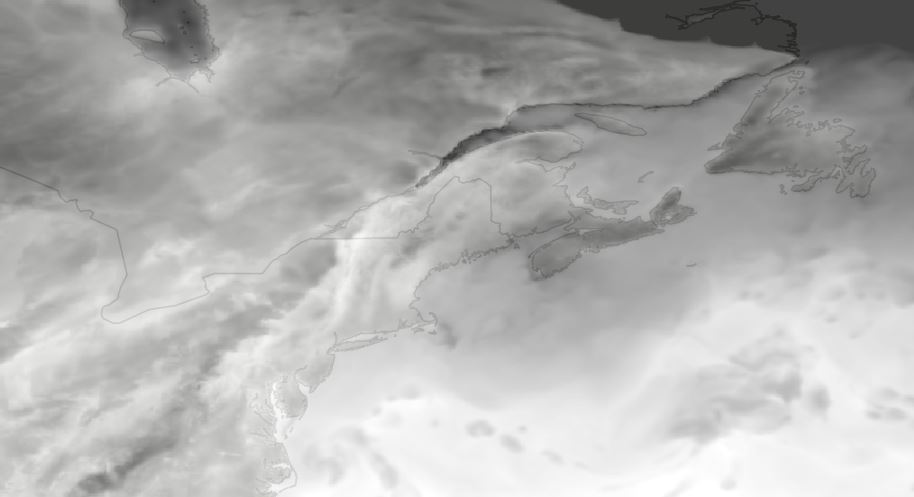
WCPS-coupled forecast is the component in the Water Cycle Prediction System (WCPS) that provides the coupled atmosphere-ocean-sea ice forecasts at a 1km resolution (0.008 x 0.008 degree) over the Great Lakes, St. Lawrence River and the Gulf of St. Lawrence. It launches 4 times a day at 00, 06, 12, and 18 UTC and produces 84 hours forecast, based on the atmospheric model GEM, coupled with the ocean-ice model NEMO-CICE. The products from WCPS-coupled forecasts are (1) GEM : surface air temperatures, surface wind velocities, and surface runoff (2) NEMO-CICE : variety of lake/ocean sea ice variables, for example, lake levels and temperatures. They are designed to help forecasters issuing bulletins and warnings in ice-infestested waters for navigation, water level alert, emergency response, Search and Rescue, and CIS Sea Ice forecast.
-

The Regional Ensemble storm Surge Prediction System (RESPS) produces storm surge forecasts using the DalCoast ocean model. DalCoast (Bernier and Thompson 2015) is a storm surge forecast system for the east coast of Canada based on the depth-integrated, barotropic and linearized form of the Princeton Ocean Model. The model is forced by the 10 meters winds and sea level pressure from the Global Ensemble Prediction System (GEPS).
-
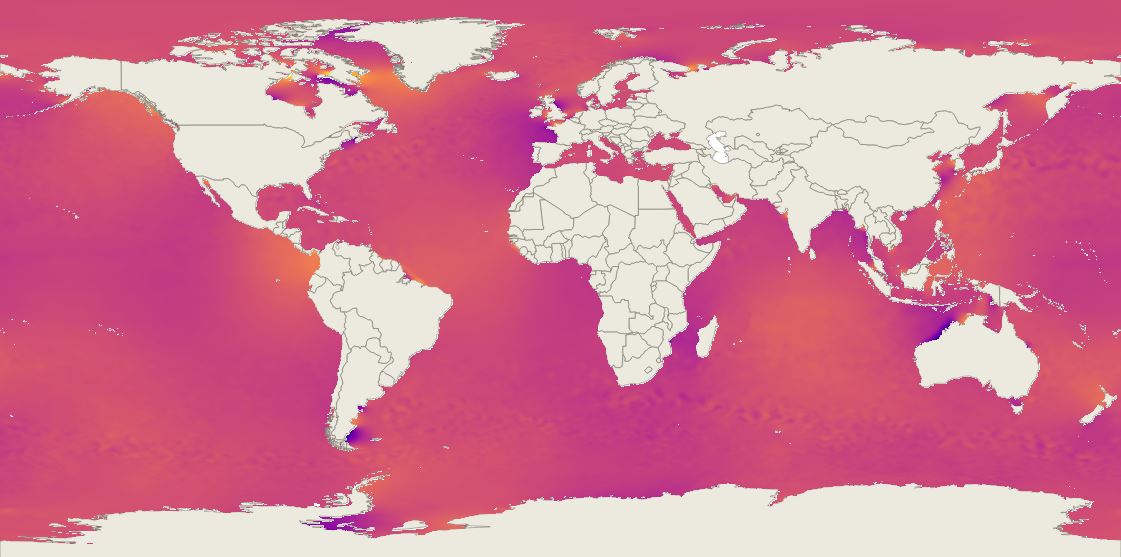
The Global Deterministic storm Surge Prediction System (GDSPS) produces water level forecasts using a modified version of the NEMO ocean model (Wang et al. 2021, 2022, 2023). It provides 240 hours forecasts twice per day on a 1/12° resolution grid (3-9 km). The model is forced by the 10 meters winds, sea level pressure, ice concentration, ice velocity and surface currents from the Global Deterministic Prediction System (GDPS). The three dimensionnal ocean temperature and salinity fields of the model are nudged to values provided by the Global Ice-Ocean Prediction System (GIOPS) and the GDPS. During the post-processing phase, storm surge elevation (ETAS) is derived from total water level (SSH) by harmonic analysis using t_tide (Foreman et al. 2009).
-
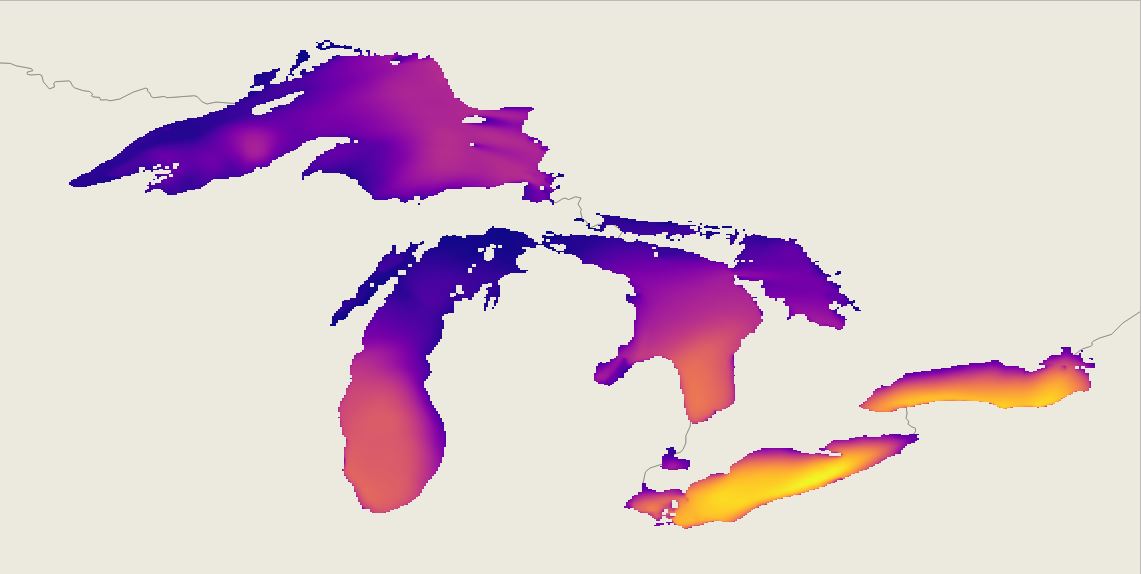
The Regional Ensemble Wave Prediction System (REWPS) uses the third generation spectral wave model WaveWatch III® (WW3) to arrive at probabilistic predictions of wave elements from the current day out to 3 days into the future. The probabilistic predictions are based on 20 ensemble members and a control member that are forced by the 10 meters winds from the Regional Ensemble Prediction System (REPS). An ice forecast from the Water Cycle Prediction System of the Great Lakes (WCPS) is used by the model to dampen or suppress wave growth in areas covered respectively with 25% to 75% and more than 75% ice. WW3 (WAVEWATCH III® Development Group, WW3DG 2019) is a third generation spectral wave prediction model that solves the evolution of the energy balance equation for the 2-D wave energy spectrum without any prior assumptions on the shape of the spectrum. The WW3 model has been implemented by a growing number of national operational forecasting centres over the last several years. The REWPS data are available on the Great Lakes domain.
-

The Regional Deterministic Wave Prediction System (RDWPS) produces wave forecasts out to 48 hours in the future using the third generation spectral wave forecast model WaveWatch III® (WW3). The model is forced by the 10 meters winds from the High Resolution Deterministic Prediction System (HRDPS). Over the Great Lakes, an ice forecast from the Water Cycle Prediction System of the Great Lakes (WCPS) is used by the model to attenuate or suppress wave growth in areas covered by 25% to 75% and more than 75% ice, respectively. Over the ocean, an ice forecast from the Regional Ice Ocean Prediction System (RIOPS) is used: in the Northeast Pacific, waves propagate freely for ice concentrations below 50%, above this threshold there is no propagation; in the Northwest Atlantic the same logic is used as in the Great Lakes. Forecast elements include significant wave height, peak period, partitioned parameters and others. This system includes several domains: Lake Superior, Lake Huron-Michigan, Lake Erie, Lake Ontario, Atlantic North-West and Pacific North-East.
-
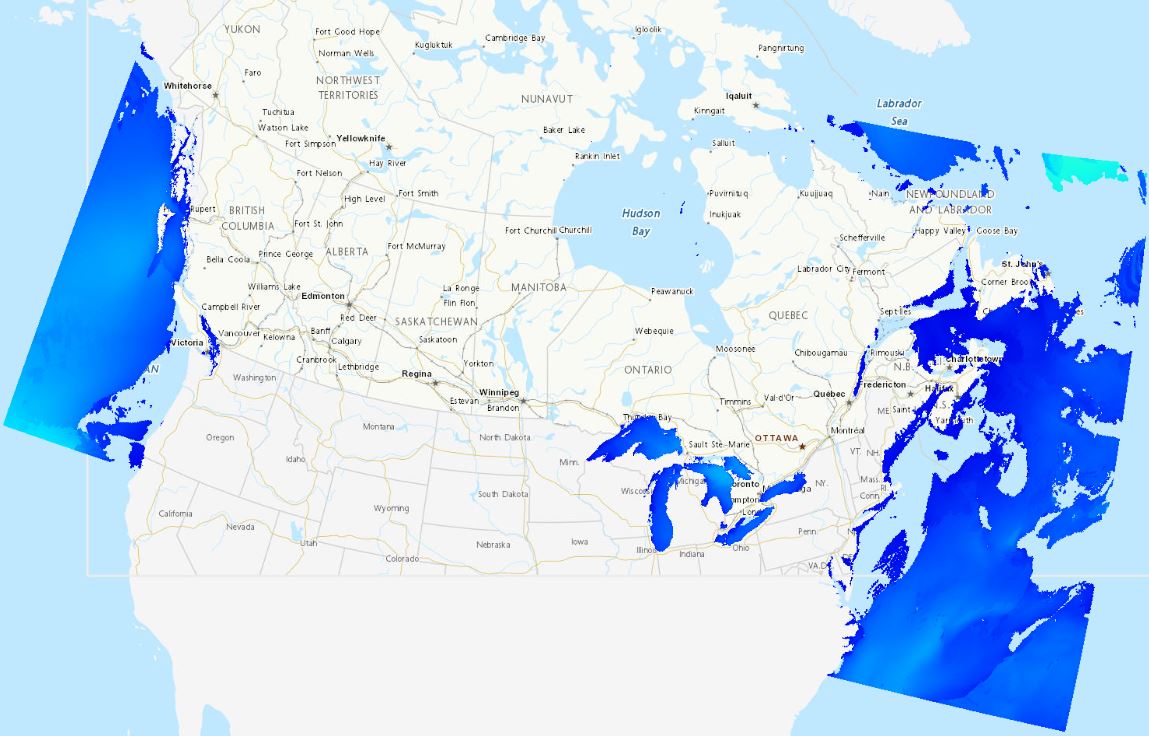
The Regional Deterministic Wave Prediction System (RDWPS) produces wave forecasts out to 48 hours in the future using the third generation spectral wave forecast model WaveWatch III® (WW3). The model is forced by the 10 meters winds from the High Resolution Deterministic Prediction System (HRDPS). Over the Great Lakes, an ice forecast from the Water Cycle Prediction System of the Great Lakes (WCPS) is used by the model to attenuate or suppress wave growth in areas covered by 25% to 75% and more than 75% ice, respectively. Over the ocean, an ice forecast from the Regional Ice Ocean Prediction System (RIOPS) is used: in the Northeast Pacific, waves propagate freely for ice concentrations below 50%, above this threshold there is no propagation; in the Northwest Atlantic the same logic is used as in the Great Lakes. Forecast elements include significant wave height, peak period, partitioned parameters and others. This system includes several domains: Lake Superior, Lake Huron-Michigan, Lake Erie, Lake Ontario, Atlantic North-West and Pacific North-East.
-
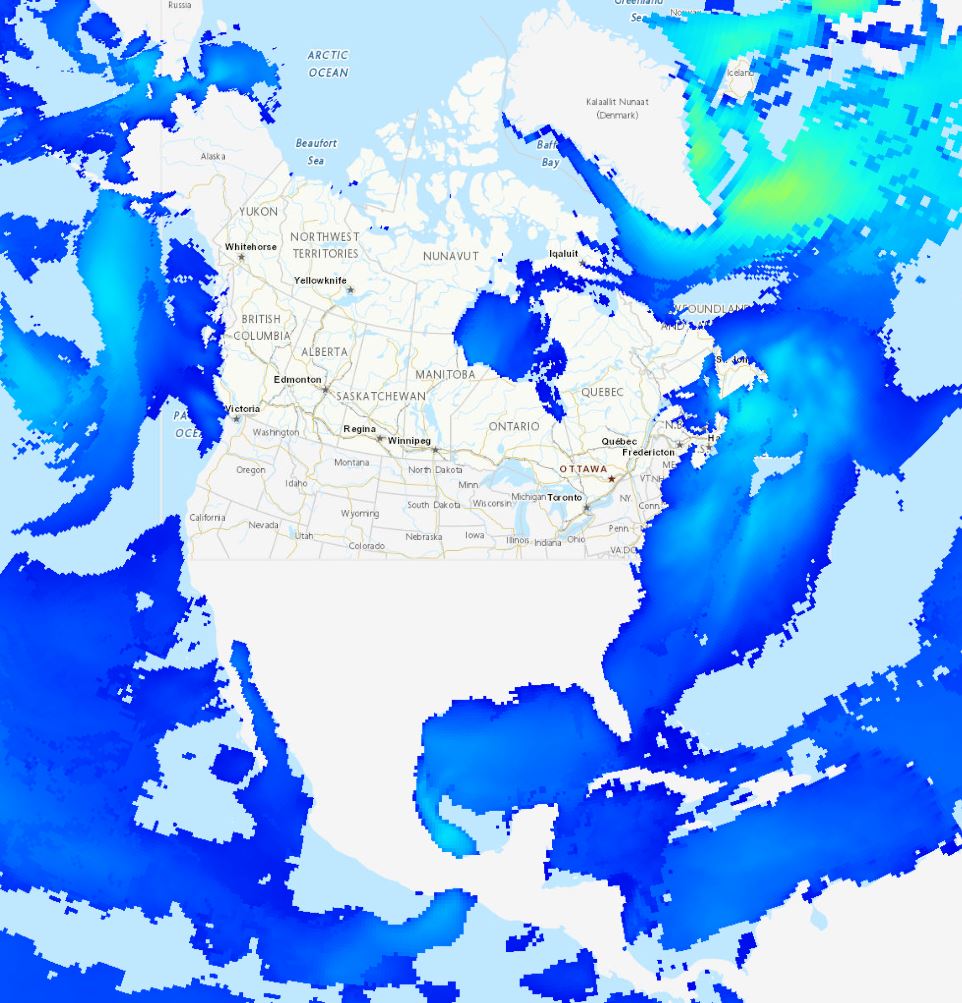
The Global Deterministic Wave Prediction System (GDWPS) produces wave forecasts out to 120 hours in the future using the third generation spectral wave forecast model WaveWatch III® (WW3). The model is forced by the 10 meters winds and the ice concentration from the Global Deterministic Prediction System (GDPS). The ice concentration is used by the model to attenuate wave growth in areas covered by 25% to 75% ice and to suppress it for concentration above 75%. Forecast elements include significant wave height, peak period and primary swell height, direction and period.
-

The Regional Deterministic Wave Prediction System (RDWPS) produces wave forecasts out to 48 hours in the future using the third generation spectral wave forecast model WaveWatch III® (WW3). The model is forced by the 10 meters winds from the High Resolution Deterministic Prediction System (HRDPS). Over the Great Lakes, an ice forecast from the Water Cycle Prediction System of the Great Lakes (WCPS) is used by the model to attenuate or suppress wave growth in areas covered by 25% to 75% and more than 75% ice, respectively. Over the ocean, an ice forecast from the Regional Ice Ocean Prediction System (RIOPS) is used: in the Northeast Pacific, waves propagate freely for ice concentrations below 50%, above this threshold there is no propagation; in the Northwest Atlantic the same logic is used as in the Great Lakes. Forecast elements include significant wave height, peak period, partitioned parameters and others. This system includes several domains: Lake Superior, Lake Huron-Michigan, Lake Erie, Lake Ontario, Atlantic North-West and Pacific North-East.
-
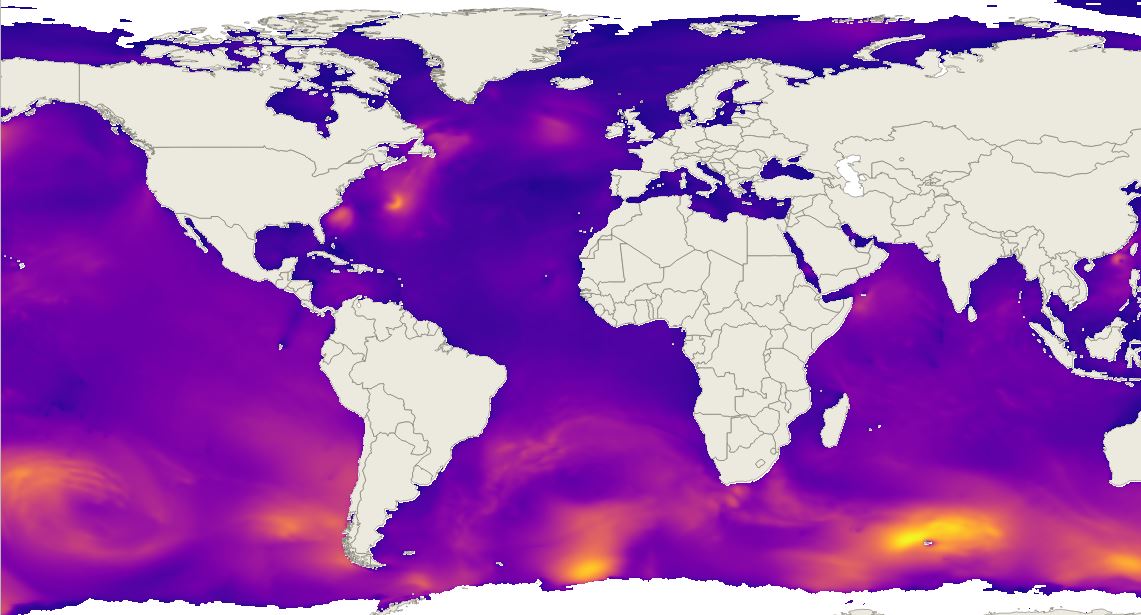
The Global Ensemble Wave Prediction System (GEWPS) uses the third generation spectral wave model WaveWatch III® (WW3) to arrive at probabilistic predictions of wave elements from the current day out to 16 days into the future. The probabilistic predictions are based on 20 ensemble members and a control member that are forced by the 10 meters winds from the Global Ensemble Prediction System (GEPS). The GEPS forecast is a coupled atmosphere-ice-ocean model, its sea ice forecast is used by the GEWPS to dampen or suppress wave growth in areas covered respectively with 25% to 75% and more than 75% ice. WW3 (WAVEWATCH III® Development Group, WW3DG 2019) is a third generation spectral wave prediction model that solves the evolution of the energy balance equation for the 2-D wave energy spectrum without any prior assumptions on the shape of the spectrum. The WW3 model has been implemented by a growing number of national operational forecasting centres over the last several years.
-
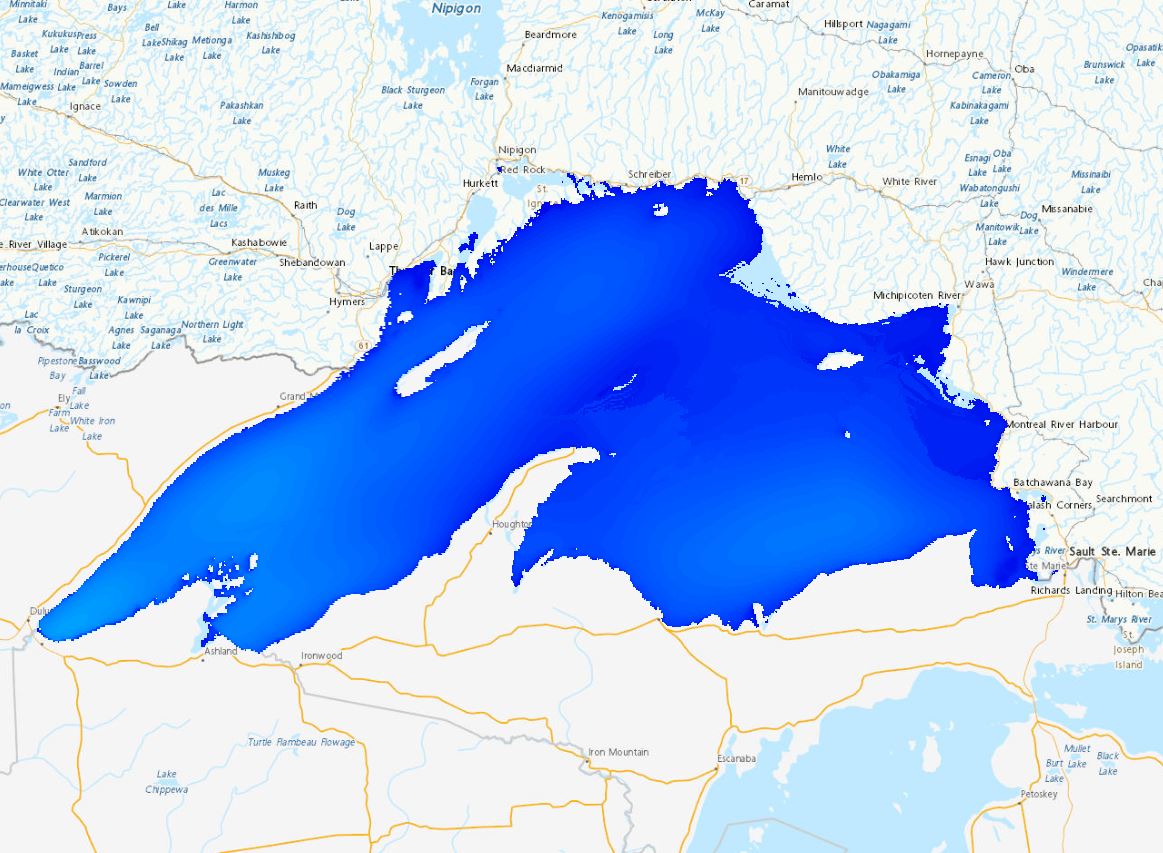
The Regional Deterministic Wave Prediction System (RDWPS) produces wave forecasts out to 48 hours in the future using the third generation spectral wave forecast model WaveWatch III® (WW3). The model is forced by the 10 meters winds from the High Resolution Deterministic Prediction System (HRDPS). Over the Great Lakes, an ice forecast from the Water Cycle Prediction System of the Great Lakes (WCPS) is used by the model to attenuate or suppress wave growth in areas covered by 25% to 75% and more than 75% ice, respectively. Over the ocean, an ice forecast from the Regional Ice Ocean Prediction System (RIOPS) is used: in the Northeast Pacific, waves propagate freely for ice concentrations below 50%, above this threshold there is no propagation; in the Northwest Atlantic the same logic is used as in the Great Lakes. Forecast elements include significant wave height, peak period, partitioned parameters and others. This system includes several domains: Lake Superior, Lake Huron-Michigan, Lake Erie, Lake Ontario, Atlantic North-West and Pacific North-East.
